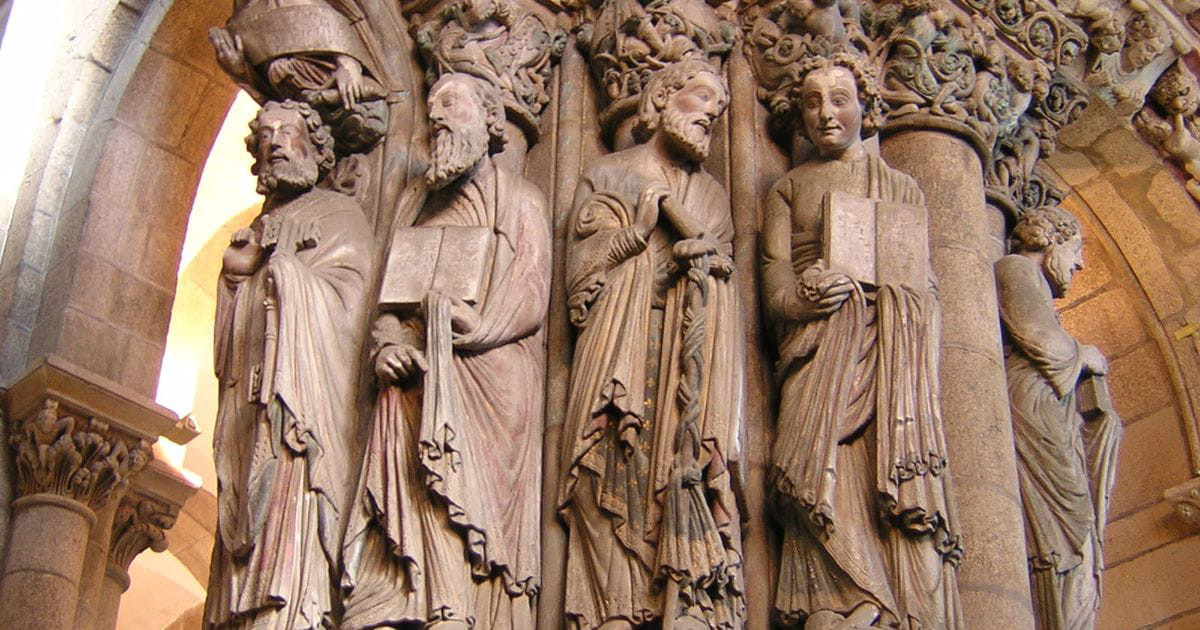APPLETON PRIVATE UNIVERSITY PRESENTA EL PRIMER VOLUMEN DE UNA FASCINANTE SERIE DE INVESTIGACIÓN
ART ESP / ING
La APPLETON PRIVATE UNIVERSITY anuncia con entusiasmo el lanzamiento de su nueva obra: "LA PIEDRA Y LA ESTRELLA: LAS DOCE CRUCES DE SANTIAGO, Volumen I: Sellos de Consagración y el Despertar Alquímico". Escrito por el Dr. José M. Castelo-Appleton (Rector y experto en religiones comparadas) y el Dr. David Mendoza (historiador medieval y especialista en esoterismo), este libro promete una visión revolucionaria de la Catedral de Santiago de Compostela.
¿Qué esconde la piedra?
Para el Dr. Castelo-Appleton, "Caminar por Santiago es percibir la magia de la piedra"
Las 12 Cruces: Un Mapa Alquímico
El corazón de este primer volumen reside en la interpretación de las doce cruces de consagración de la Catedral. Estos no son solo símbolos litúrgicos, sino que, para los autores, representan "sellos de un crisol cósmico"
Pedro Muñiz: El Arzobispo Alquimista
La figura central es el Arzobispo Pedro Muñiz del siglo XIII, un hombre que "buscaba el cómo y el porqué, no solo de lo visible, sino de los hilos invisibles que tejen la urdimbre del universo"
La Catedral: Un Tratado Alquímico en Piedra
La obra propone una lectura innovadora de la Catedral como un "vasto tratado de Alquimia"
Un Libro para Mentes Curiosas
Este volumen I es una invitación a "mirar más allá de la superficie"
"La Piedra y la Estrella" promete transformar su visión de Santiago. Prepárese para una peregrinación intelectual que fusiona historia, misticismo y el asombroso legado de la magia de la piedra.
"LA PIEDRA Y LA ESTRELLA: LAS DOCE CRUCES DE SANTIAGO, Volumen I: Sellos de Consagración y el Despertar Alquímico" estará disponible a EN BREVE DE FORMA GRATUITA
-------------------
APPLETON PRIVATE UNIVERSITY is thrilled to announce the upcoming publication of its first work in a monumental new series: "THE STONE AND THE STAR: THE TWELVE CROSSES OF SANTIAGO, Volume I: Seals of Consecration and the Alchemical Awakening". Authored by Dr. José M. Castelo-Appleton (Rector and expert in comparative religions) and Dr. David Mendoza (medieval historian and esotericism specialist), this foundational volume promises a revolutionary understanding of one of Christendom's most iconic sites.
What Secrets Does the Stone Hold?
According to Dr. Castelo-Appleton, "Walking through Santiago is perceiving the magic of the stone." This inaugural volume, the first in a series of twelve, delves beyond conventional historical narratives to explore the hidden mysteries of the Cathedral. The authors' "different and bold investigation"
The 12 Crosses: An Alchemical Map
At the heart of this first volume lies the interpretation of the twelve consecration crosses of Santiago Cathedral. These are not mere liturgical symbols; for the authors, they represent "seals of a cosmic crucible"
Pedro Muñiz: The Alchemist Archbishop
Central to this narrative is the figure of Archbishop Pedro Muñiz from the 13th century. He was a man who "restlessly sought the
how and the why, not only of the visible, but of the invisible threads that weave the fabric of the universe"
The Cathedral: A Stone Alchemical Treatise
The work proposes a groundbreaking interpretation of the Cathedral as a "vast alchemical treatise"
A Book for Curious Minds
Volume I is an invitation to "look beyond the surface"

